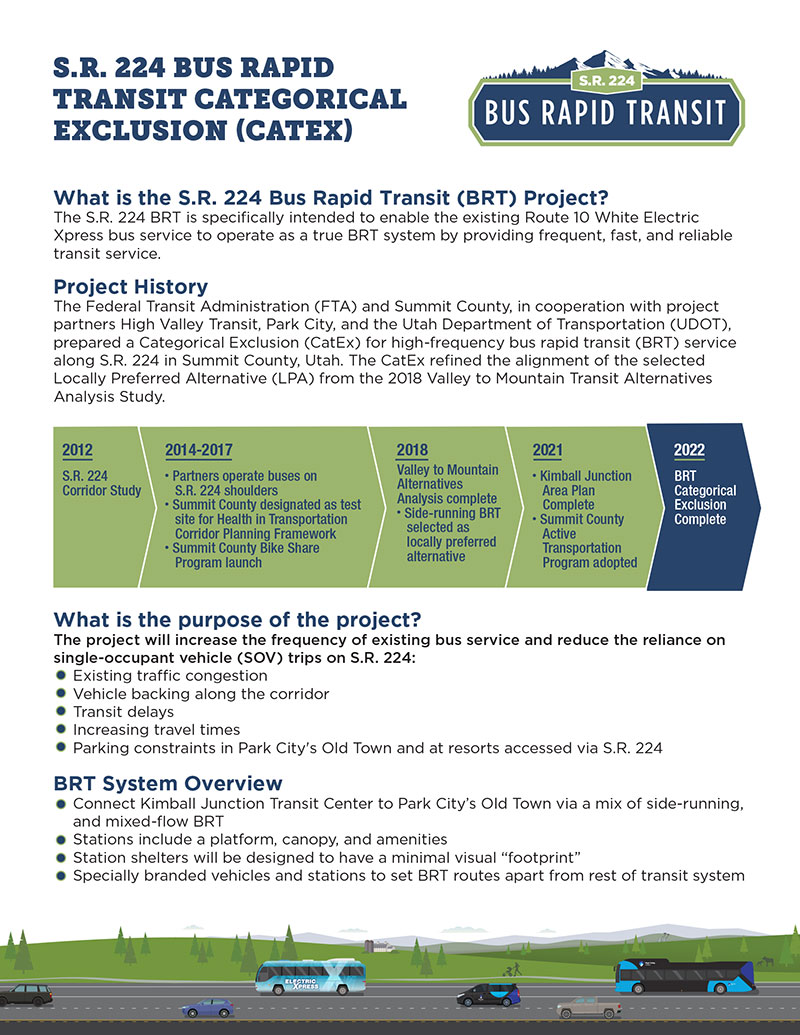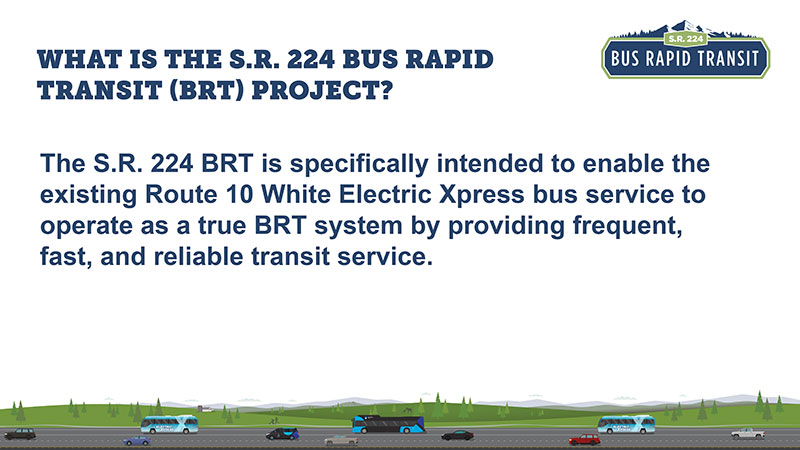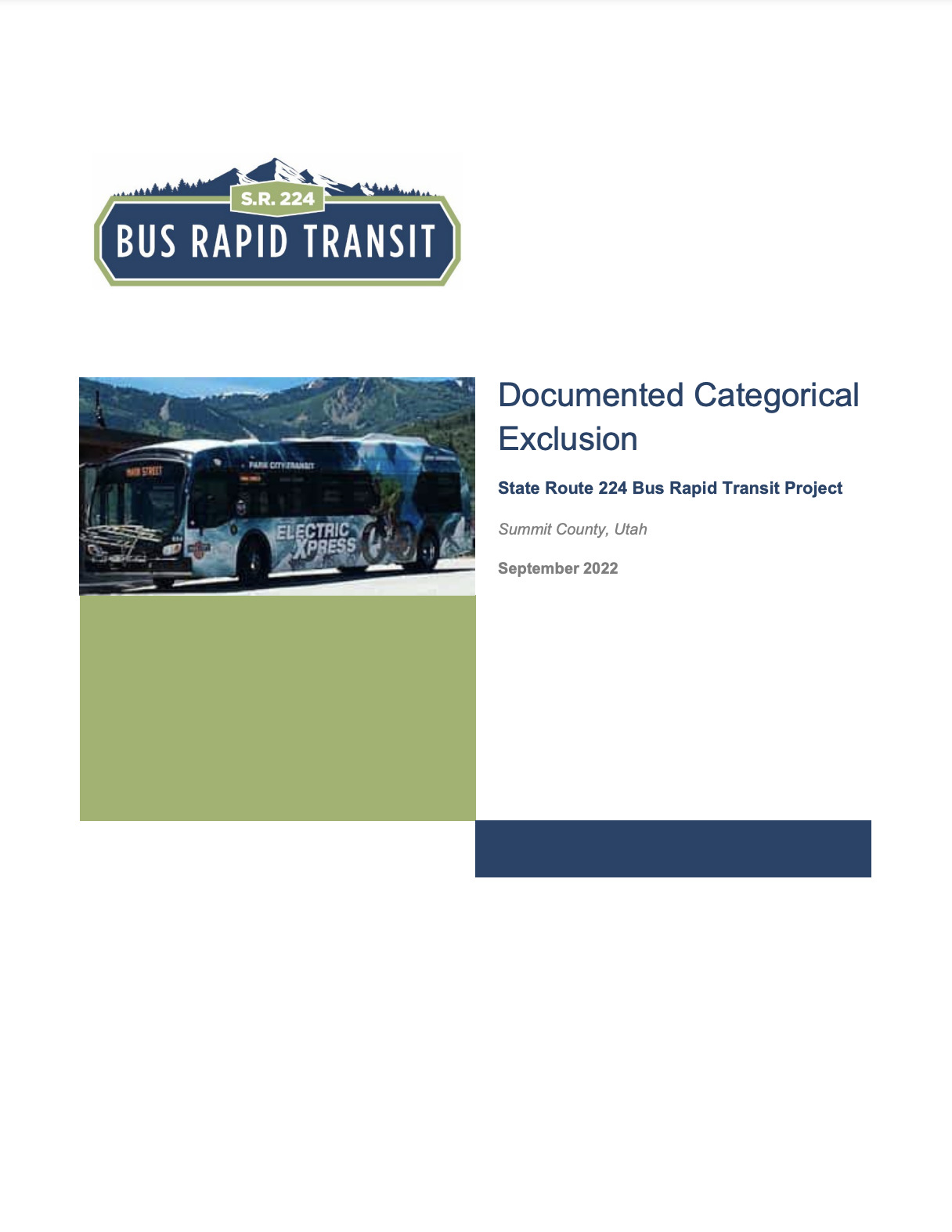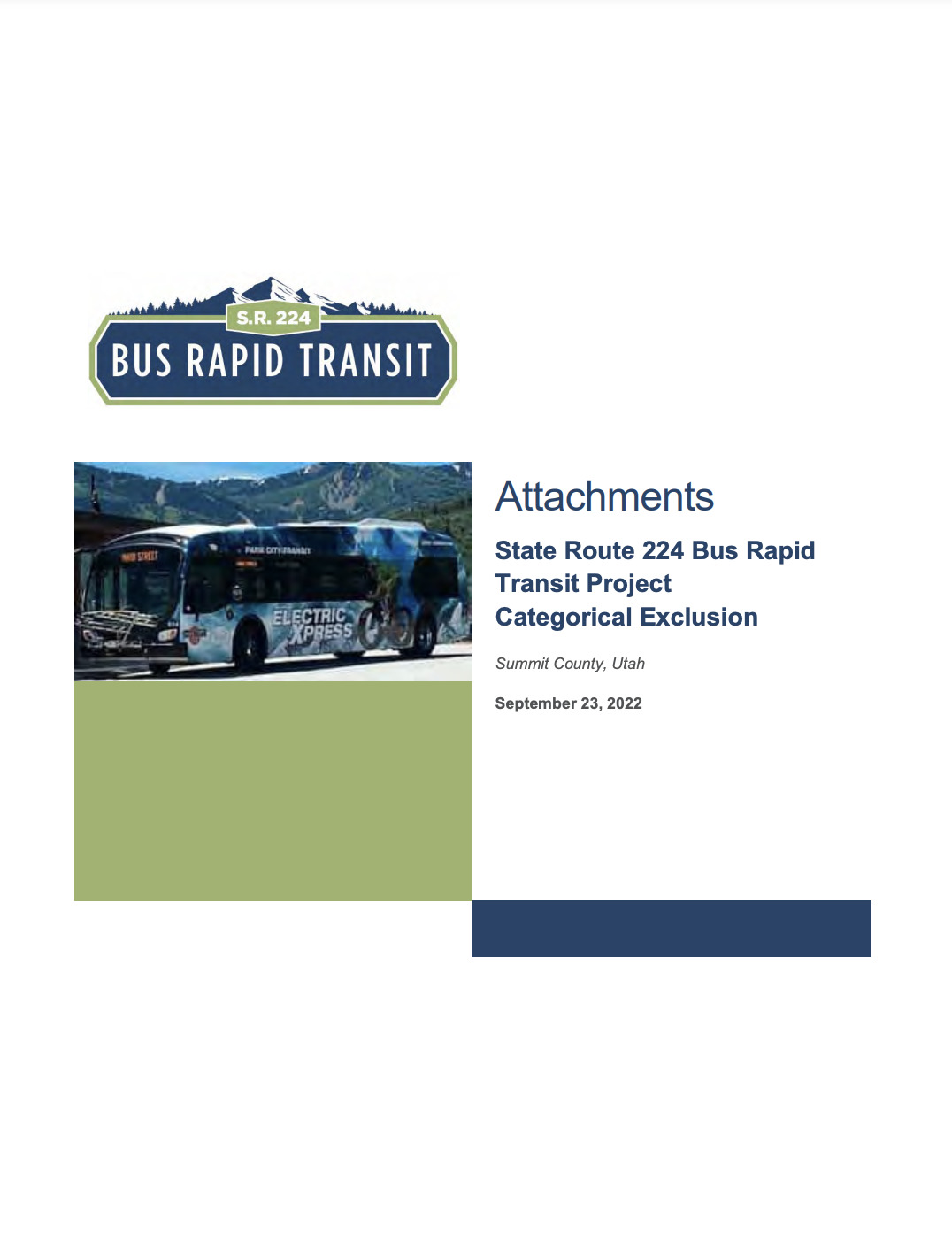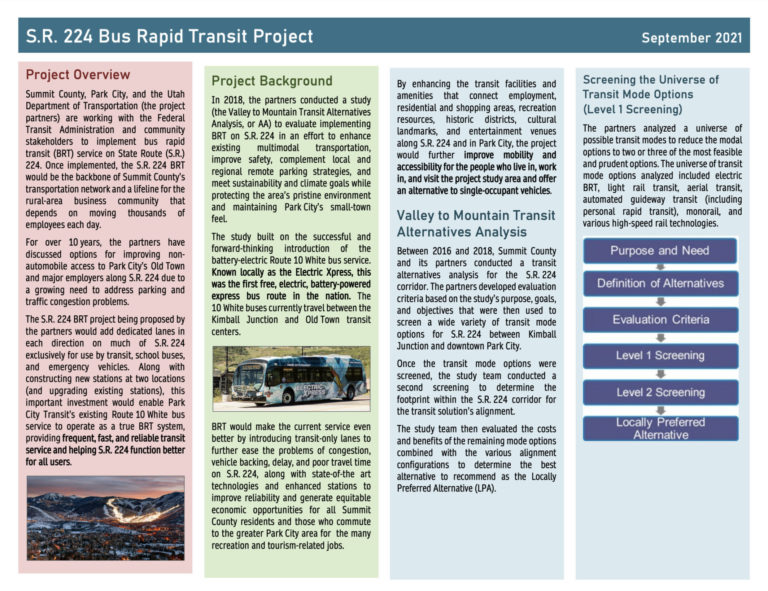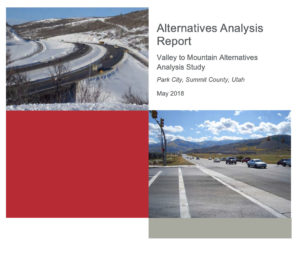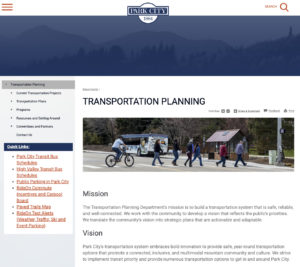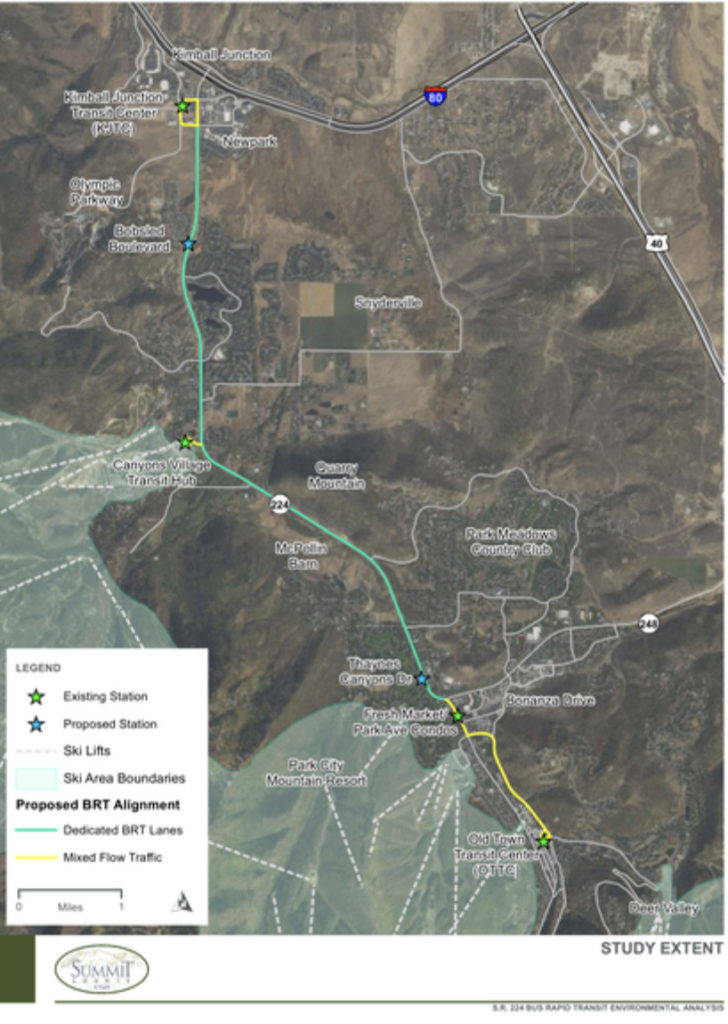Public Open House

S.R. 224 Bus Rapid Transit Categorical Exclusion
The Federal Transit Administration (FTA) and Summit County, in cooperation with project partners High Valley Transit, Park City, and the Utah Department of Transportation (UDOT), prepared a Categorical Exclusion for high-frequency bus rapid transit (BRT) service along S.R. 224 in Summit County, Utah.
The project will add a dedicated lane in each direction of S.R. 224 exclusively for use by transit vehicles. The project will specifically enable the Electric Xpress/10 White route to operate as a true BRT system, providing frequent, fast, and reliable transit service and helping the S.R. 224 roadway to function better for all users.
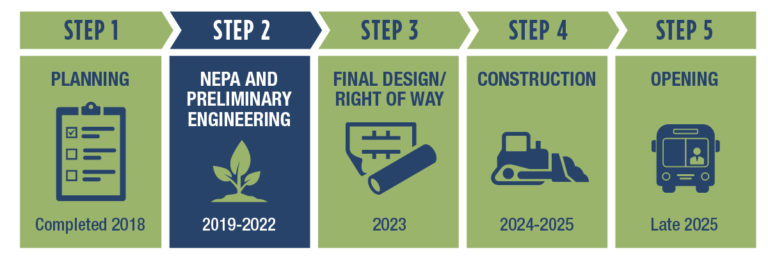
CatEx Documents
The FTA and partners evaluated the significant environmental, social, and economic impacts of the No-Build Alternative and the LPA. The expected impacts of the project and measures to avoid, minimize, or mitigate all adverse impacts are documented in the CatEx.
Study Goals & Purpose
- Bolster S.R. 224 as the backbone of the regional transit system by improving the reliability and reducing the travel time of the 10 White bus service and other transit services on S.R. 224.
- Complement local and regional remote parking strategies to reduce the number of vehicles coming into Park City’s Old Town and improve non-automobile access to Park City’s Old Town and other major employers along S.R. 224.
- Increase accessibility and ensure equitable access to jobs and other resources located along S.R. 224.
- Support healthy communities, best environmental practices, and the sustainability goals of the community.
Study Timeline & Process
Technical Data Collection
Develop Project Design Criteria
Conduct Alternatives Analysis screening for southern portion of alignment; refine Locally Preferred Alternative; conduct environmental surveys
Develop design options for key intersections along the corridor and continue to refine the Locally Preferred Alternative; complete traffic and ridership studies
Determine impacts from the Locally Preferred Alternative
Prepare and Submit Environmental Document; public meeting
Alternatives Analysis
- Down the center of S.R. 224
- Running on one side of S.R. 244
- Running on both sides of S.R. 224
Locally Preferred Alternative
Since the AA process, Summit County and Park City have decided against the Bonanza Drive terminus and have moved the southern terminus of the BRT to the Park City Old Town Transit Center to mirror the full, current extent of the Electric Xpress/10 White service and support a year-round destination to Park City’s Old Town. The Summit County and Park City Councils formally adopted the refined LPA on September 1 and November 18, 2021, respectively.

